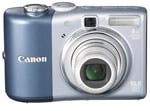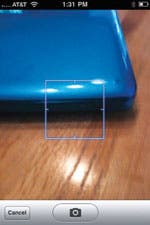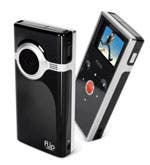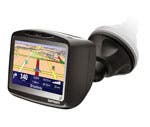 In the two years since the introduction of the iPhone, a number of “iPhone killers” have been released. None of these smartphones have been able to stop, or even slow down, the iPhone’s momentum. With the release of the iPhone 3GS and OS 3.0, the iPhone has become a more powerful and feature-rich device. So much so, that it is moving beyond the “smartphone” niche and becoming more of a phone/pocket computer combo. And just as the personal computer rendered the typewriter unnecessary, the iPhone is becoming a threat to other mobile electronic “killer devices!” This article looks at the impact the iPhone is having on four types of these devices.
In the two years since the introduction of the iPhone, a number of “iPhone killers” have been released. None of these smartphones have been able to stop, or even slow down, the iPhone’s momentum. With the release of the iPhone 3GS and OS 3.0, the iPhone has become a more powerful and feature-rich device. So much so, that it is moving beyond the “smartphone” niche and becoming more of a phone/pocket computer combo. And just as the personal computer rendered the typewriter unnecessary, the iPhone is becoming a threat to other mobile electronic “killer devices!” This article looks at the impact the iPhone is having on four types of these devices.
Point-and-shoot digital cameras
 Both the original iPhone and the iPhone 3G left a good deal to be desired in terms of photography. Both came with a fixed-lens, 2 megapixel camera and the pictures taken with it were mediocre. A host of camera-related apps were released to extend the usefulness of the camera. Unfortunately, they could not change the basics of the camera, which were—well—very basic!
Both the original iPhone and the iPhone 3G left a good deal to be desired in terms of photography. Both came with a fixed-lens, 2 megapixel camera and the pictures taken with it were mediocre. A host of camera-related apps were released to extend the usefulness of the camera. Unfortunately, they could not change the basics of the camera, which were—well—very basic!
Canon A1000 digital camera

Despite the limitations of the camera, a reasonable percentage of pictures saved to online image services were taken with one of those two iPhones. The reasons are rather simple: the pictures are of good enough quality; the iPhone’s data connection means you can take a picture and e-mail or post it within seconds; and the iPhone is carried by the user all the time.
 A friend of mine once referred to the iPhone’s camera as the “best camera available.” He didn’t say this because it produced the best photos, but because it was always available—in your pocket and ready to take a picture on a moment’s notice. Even with its relatively low-quality camera, the iPhone was already becoming a threat to the simple, “point-and-shoot” digital camera.
A friend of mine once referred to the iPhone’s camera as the “best camera available.” He didn’t say this because it produced the best photos, but because it was always available—in your pocket and ready to take a picture on a moment’s notice. Even with its relatively low-quality camera, the iPhone was already becoming a threat to the simple, “point-and-shoot” digital camera.
The iPhone 3GS comes with a 3 MP camera that captures reasonably high quality images.
The release of the iPhone 3GS and OS 3.0 only increased the threat. The 3GS comes with an enhanced 3 megapixel camera and the new OS adds autofocus to the camera app. The result is better quality images and more flexibility than ever before and it’s easier to post your images online (see the Twitter Apps article, page 28).
It’s true that the iPhone doesn’t come close to my 8 megapixel digital camera in terms of quality or flexibility. (It doesn’t even have a flash.) However, that fact is irrelevant. Even though my iPhone 3GS doesn’t capture 8 megapixel photos, 3 MP is good enough so that I no longer have to carry my digital camera with me. High-end camera manufacturers don’t need to worry (yet), but companies that market simple, point-and-shoot digital cameras should be concerned.
Ultra-portable camcorders
 I didn’t expect the video recording capability of the iPhone 3GS to be all that good, and I didn’t think I’d use it very much. I was wrong on both counts! The quality of the video captured by the 3GS is reasonable—somewhere between acceptable and good. But the camera app also lets you trim your video and upload it to YouTube or MobileMe as soon as it is shot. (This is one of the reasons why YouTube has been clogged with new iPhone videos since the release of the iPhone 3GS.) Flip Video and other companies that market ultra-portable camcorders should take notice.
I didn’t expect the video recording capability of the iPhone 3GS to be all that good, and I didn’t think I’d use it very much. I was wrong on both counts! The quality of the video captured by the 3GS is reasonable—somewhere between acceptable and good. But the camera app also lets you trim your video and upload it to YouTube or MobileMe as soon as it is shot. (This is one of the reasons why YouTube has been clogged with new iPhone videos since the release of the iPhone 3GS.) Flip Video and other companies that market ultra-portable camcorders should take notice.
The iPhone 3GS lets you capture and edit video.
 I’m a fan of Flip Video’s products and have used their Mino and UltraHD camcorders. Their video cameras are small, lightweight, shoot decent quality video, and have onboard software that automatically loads whenever the Flip is plugged into a computer via the built-in USB connector. The software lets you edit video, create movies, and upload to a variety of online video sharing services, including their own.
I’m a fan of Flip Video’s products and have used their Mino and UltraHD camcorders. Their video cameras are small, lightweight, shoot decent quality video, and have onboard software that automatically loads whenever the Flip is plugged into a computer via the built-in USB connector. The software lets you edit video, create movies, and upload to a variety of online video sharing services, including their own.
Flip Video Mino camcorder
The iPhone’s video quality is as good as the Mino, but doesn’t compare to the quality of the UltraHD. However, the iPhone’s video capability is good enough for situations in which you would normally use an ultra-portable camcorder. In addition, you’re able to trim and upload videos from the iPhone without having to connect to a computer. I see no reason why anyone who owns an iPhone 3GS would need to buy a separate ultra-portable camcorder.
Another thing to consider is that the 3GS is Apple’s first shot at mobile video. The video camera software built into the iPhone will only improve over time, and Apple is sure to enhance the editing capabilities of the software. In addition, the camera built into the 3GS is reported to be capable of shooting high quality 720p video if Apple chooses to support it. Finally, rumors abound that the next generation of the iPod touch and perhaps even iPod nano will sport video cameras as well. If they do, the rest of the ultra-portable camcorder market ought to be quaking in their boots.
 Standalone GPS units
Standalone GPS units
The iPhone 3G’s GPS capabilities were impressive, but the lack of turn-by-turn directions with voice prompts placed it a distant second to the standalone GPS units I’ve used. All that changed with the introduction of OS 3.0, the 3GS, and new GPS apps that are slowly emerging.
TomTom's GO 715 standalone GPS solution
 I have tried the AT&T Navigator (the app is free but AT&T charges a monthly fee) and G-Map ($20-$35), both of which are available in the App Store. These apps are a great way to get turn-by-turn directions, but each has its limitations. The AT&T app only works when you have an active data connection. G-Map is relatively expensive and it’s unclear how the developer will provide updated maps for the app.
I have tried the AT&T Navigator (the app is free but AT&T charges a monthly fee) and G-Map ($20-$35), both of which are available in the App Store. These apps are a great way to get turn-by-turn directions, but each has its limitations. The AT&T app only works when you have an active data connection. G-Map is relatively expensive and it’s unclear how the developer will provide updated maps for the app.  Power users may miss some of the features found only on high-end, standalone GPS units. Some users may be concerned about the battery drain caused by constant use of GPS and a turn-by-turn app. However, this application would mostly be used while you’re in a vehicle. An optional power adapter that plugs into your cigarette lighter would eliminate this problem.
Power users may miss some of the features found only on high-end, standalone GPS units. Some users may be concerned about the battery drain caused by constant use of GPS and a turn-by-turn app. However, this application would mostly be used while you’re in a vehicle. An optional power adapter that plugs into your cigarette lighter would eliminate this problem.
AT&T Navigator (left) and G-Map (right) are two new apps that take advantage of the iPhone’s enhanced GPS capabilities.
The majority of iPhone users should be satisfied with the capabilities of the newest iPhone and third-party GPS apps. There’s still plenty of room in the market for standalone GPS units, but the continued success of the iPhone certainly won’t boost sales for GPS vendors.
Internet radio devices
 In the past few years I’ve owned a standalone XM radio and I have considered buying a Slacker portable radio. But with Slacker’s release of its own iPhone app, there’s no longer any need for a separate device. Slacker isn’t the only developer to release an Internet radio app. Go to the App Store and check out Pandora, Last.fm, Stitcher Radio, AOL radio, PocketTunes, and the new Sirius XM app.
In the past few years I’ve owned a standalone XM radio and I have considered buying a Slacker portable radio. But with Slacker’s release of its own iPhone app, there’s no longer any need for a separate device. Slacker isn’t the only developer to release an Internet radio app. Go to the App Store and check out Pandora, Last.fm, Stitcher Radio, AOL radio, PocketTunes, and the new Sirius XM app.
 Unless you want a specific program that’s only found on one source, or the availability of multi-hour buffering on a dedicated player, the Internet radio solutions for the iPhone are more than sufficient. (And they’re getting better all the time.)
Unless you want a specific program that’s only found on one source, or the availability of multi-hour buffering on a dedicated player, the Internet radio solutions for the iPhone are more than sufficient. (And they’re getting better all the time.)
Slacker Radio (left), Stitcher Radio (right) and Sirius XM (bottom-left) are among a number of Internet radio apps available for the iPhone.
Jack of all trades; master of many!
As the iPhone’s hardware continues to improve and third-party apps take advantage of the enhancements, more mobile device developers are going to start feeling the heat. The iPhone has evolved way beyond its origins as a functional phone/PDA combo. It’s become a Jack of all trades and an unexpected master of many.
My iPhone is my GPS unit, my mobile Internet device, my point-and-shoot camera, my portable video camcorder, my Internet radio device, and much more. In fact, now that the device can display the keyboard in a wider landscape orientation in productivity apps like DocsToGo, it even stands in for my notebook computer on occasion. (There’s no serious competition with the Netbook market yet, but if Apple ever allows the use of external Bluetooth keyboards, there will be!)
And while tech journalists review each new and improved smartphone, wondering whether it will be “The One,” the “iPhone Killer,” Apple’s powerful phone is sailing towards greater success, leaving in its wake a trail of single-purpose “Killer devices.”


